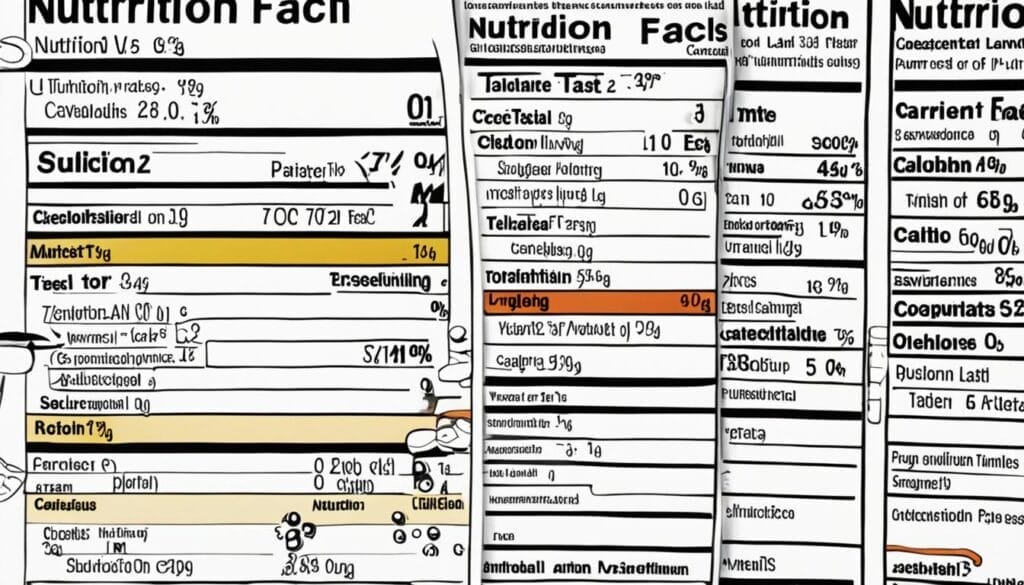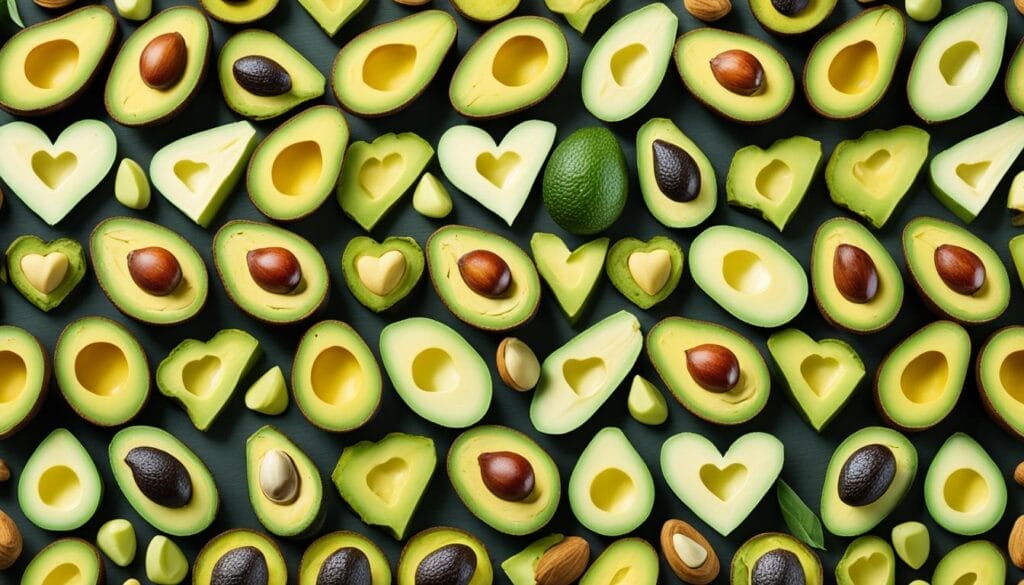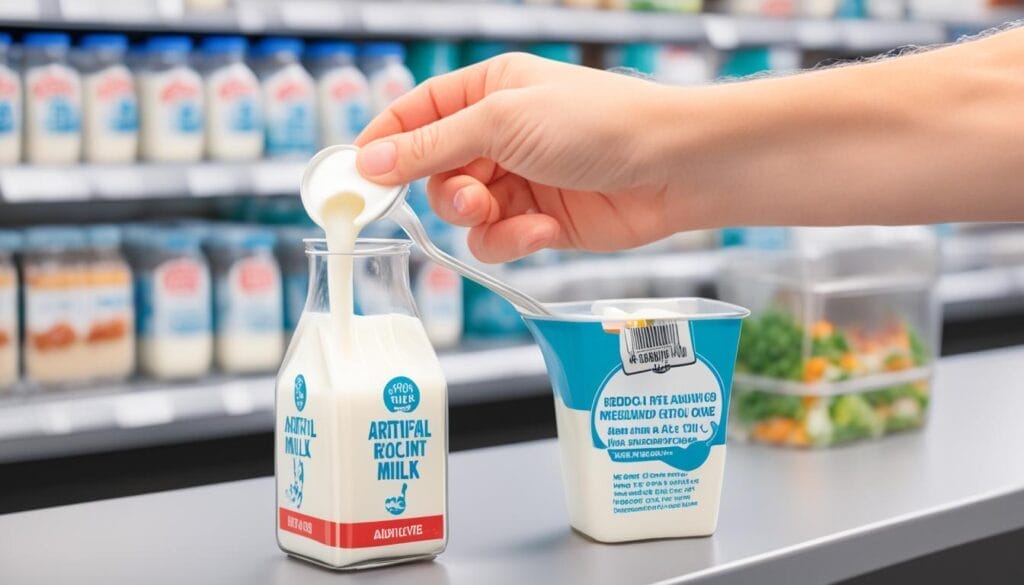Supermarket shelves are full of foods and drinks, many of them making claims that sound healthy. Food labelling can help us make informed decisions when shopping, but understanding the labels can feel difficult. Back-of-pack information can provide detailed information about a product’s nutritional content and ingredients.
In this guide, we’ll provide you with several easy tips to help you read back-of-packet labelling and make healthier choices. But first, let me share a personal experience that made me realise the importance of decoding nutrition labels.
Last year, I decided to make some changes to my diet and incorporate more nutritious foods. I was browsing through the aisles of my local supermarket, when I came across a box of granola bars that claimed to be “low calorie” and “all-natural.” Intrigued, I picked up the box and turned it around to read the back.
As I started reading the nutrition labels, I was bombarded with unfamiliar terms and numbers. It felt overwhelming trying to decode the information and truly understand what was in the product. But I was determined to make healthier choices, so I persevered.
Slowly, I started deciphering the dietary information and nutritional values. I learned to pay attention to the ingredient list, checking for any artificial additives or excessive amounts of sugar. I also discovered the importance of checking the nutrition information table, focusing on the amounts of fat, sugar, and salt in the product.
Armed with this newfound knowledge, I was able to make more informed decisions about what I was putting into my body. I started to choose products with healthier ingredients and lower levels of sugar and salt. I even found some hidden gems that I wouldn’t have noticed otherwise.
Decoding nutrition labels was like unlocking a whole new world of healthier options. It empowered me to take control of my dietary choices and prioritise my well-being. Now, I want to share this knowledge with you, so you too can navigate the supermarket aisles confidently and make healthier choices for yourself and your family.
Key Takeaways:
- Understanding nutrition labels is crucial for making informed food choices.
- Pay attention to the ingredient list and look out for excessive amounts of sugar and artificial additives.
- Check the nutrition information table for fat, sugar, and salt content.
- Make sure to decipher the serving size and consider portion sizes when comparing products.
- Decoding nutrition labels empowers you to make healthier choices for your well-being.
Read the Ingredients List
The ingredients list on the back of a packet provides valuable information about the contents of your food. It lists all the ingredients in weight order, from largest to smallest. Paying attention to this list can help you make informed choices about the food you consume. Let’s dive deeper into understanding the ingredients list and what to look out for.
Weight Order
The ingredients are listed in weight order, meaning the ingredient with the highest quantity is listed first and so on. By looking at the first few ingredients, you can get an idea of the largest proportion of the food.
Saturated Fat and Sugars
It’s important to pay attention to ingredients such as saturated fat and sugars. Saturated fats, found in foods like cream, butter, and fatty meats, can impact heart health when consumed in excess. Sugars, including white sugar, brown sugar, syrups, and concentrated fruit juice, can contribute to weight gain and dental issues.
Vitamins, Minerals, and Salt
Some breakfast cereals and other products may have added vitamins and minerals, which can be beneficial for our overall diet. However, it’s important to note that even small amounts of salt in the ingredients can contribute to reaching our maximum daily intake of 6g.
Here is a sample table to illustrate an example of an ingredients list:
Ingredient Weight (g)
Sugar 25
Flour 150
Butter 100
Salt 2
As shown in the table, the ingredients are listed in weight order, and we can see that sugar is the ingredient with the highest quantity at 25g.
By reading the ingredients list and being aware of the key elements such as saturated fat, sugars, vitamins, minerals, and salt, you can make healthier choices when it comes to your food.
Check the Nutrition Information
The nutrition information table on the back of a packet provides important details about a product’s nutritional content. By checking this table, you can make informed choices about the foods you consume. When comparing products, it is best to use the per 100g column as this allows for a fair comparison of nutritional values.
Key Nutrients to Consider
Pay close attention to the following key nutrients:
- Total fat: This includes all types of fat in the product. Consuming excessive amounts of fat can contribute to weight gain and increase the risk of certain health conditions.
- Saturated fat: This type of fat can raise cholesterol levels and increase the risk of heart disease. It is recommended to limit the intake of saturated fats.
- Sugar: Excessive sugar consumption can lead to weight gain, tooth decay, and an increased risk of developing chronic diseases such as diabetes and heart disease.
- Salt: High salt intake can contribute to elevated blood pressure and increase the risk of heart disease and stroke. It is important to be mindful of the salt content in food products.
These “big four” nutrients can have a significant impact on your overall health. By making conscious choices to limit your intake of total fat, saturated fat, sugar, and salt, you can take steps towards a healthier lifestyle.
Additional Considerations
When examining the nutrition information, it is also important to consider the proportion of unsaturated fats and the fibre content in a product. Unsaturated fats, such as those found in nuts, seeds, and oily fish, are healthier alternatives to saturated fats. Fibre is essential for maintaining a healthy digestive system and can contribute to a balanced diet.
Remember, the nutrition information provided on the packaging is typically based on a referred portion size. It is crucial to be mindful of the portion sizes you consume to ensure you are getting the intended nutritional benefits.
Now that you understand how to check the nutrition information, let’s move on to the next section to explore why calorie counting may not be necessary for everyone.

You Don’t Need to Calorie Count
Calorie counting may seem daunting, but understanding the energy content of the foods you consume can be helpful for making healthier choices. It’s important to note that the terms “calories” and “kilojoules” indicate the amount of energy in a product.
While calorie counting isn’t necessary for everyone, being aware of the energy content can provide valuable information about portion sizes and the nutritional value of different foods.
It’s worth mentioning that the recommended daily calorie intake can vary for individuals based on factors like age, gender, weight, and physical activity level. Therefore, it’s essential to consult a healthcare professional or registered dietitian for personalised advice.
When checking the energy content of a food product, it can be useful to focus on the energy content per portion. This helps you understand how many calories you’ll consume when consuming a typical serving size.
However, to make a fair comparison between different products, it’s best to refer to the energy content per 100g column. This allows you to compare the energy content of foods on a standardized basis, regardless of portion size.
Key Points:
- Calorie counting isn’t necessary for everyone, but being aware of energy content can help you make informed choices.
- Terms like “calories” and “kilojoules” indicate the amount of energy in a food product.
- Recommended daily calorie intake varies for individuals, so consult a healthcare professional for personalised advice.
- Checking the energy content per portion can provide insights into the calories you’ll consume from a typical serving size.
- Comparing products based on the energy content per 100g allows for a fair comparison.
| Food Item | Portion Size | Energy Content (kcal) |
|---|---|---|
| Apple | 1 medium apple (182g) | 94 |
| Chocolate Bar | 1 bar (45g) | 235 |
| Yogurt | 1 pot (125g) | 115 |
| Chicken Breast | 1 breast (120g) | 165 |
Look at the Type of Fat, and How Much
Fat is a key factor to consider when making healthier food choices. It’s important to understand the difference between saturated fats and unsaturated fats for heart health. Unsaturated fats, found in foods like avocado, nuts, seeds, oily fish, and vegetable oils, are better choices compared to saturated fats.
Saturated fats are typically found in foods like butter, fatty meats, pastry, biscuits, and cakes. Consuming too much saturated fat can increase the risk of heart disease and other health issues. It’s essential to keep an eye on the nutrition information per 100g to determine whether the fat content is high, medium, or low.
Here’s a quick breakdown of the types of fat:
| Fat Type | Examples | Health Impact |
|---|---|---|
| Saturated Fat | Butter, fatty meats, pastry, biscuits, cakes | Can increase the risk of heart disease |
| Unsaturated Fat | Avocado, nuts, seeds, oily fish, vegetable oils | Better for heart health |

By incorporating more foods rich in unsaturated fats and reducing the intake of saturated fats, you can make a positive impact on your heart health. Consider substituting butter for vegetable oils, and fatty meats for lean proteins. Making these small changes can go a long way in improving your overall health.
Beware of Reduced-Fat Claims
When it comes to making healthier food choices, many of us are drawn to reduced-fat or low-fat options. After all, less fat should automatically mean a better choice, right? Well, not always.
Manufacturers often replace fat with sugar in reduced-fat versions of foods, making them not necessarily healthier alternatives. It’s important to remember that excessive sugar consumption can lead to various health issues.
When comparing reduced-fat options, it’s crucial to check the nutrition information for both the sugar and fat content. Don’t be fooled by the reduced fat claim without considering the other components of the product.
Also, keep an eye on the salt content. Lower-fat options can sometimes be higher in salt, which can negatively affect our health. So, it’s essential to read the nutrition information thoroughly to make an informed decision.
Instead of automatically reaching for the reduced-fat version, it might be better to consume a smaller amount of the original product, especially if it doesn’t contain excessive sugar or salt.
Remember to prioritize your overall nutrition goals and take a holistic approach to your food choices rather than solely focusing on the reduced-fat claim.

How to Spot Sugar on Food Labels
Sugar can be found under various names in the ingredients list, such as honey, syrup, nectar, molasses, and fruit juice concentrate. Anything ending in “ose” (such as fructose, glucose, dextrose, and maltose) is a form of sugar. It is important to be aware of added sugar, even if it sounds natural.
When reading food labels, check for the following sugar names:
| Sugar Names | Description |
|---|---|
| Honey | A sweet liquid produced by bees, often used as a natural sweetener. |
| Syrup | A thick and sticky liquid sweetener, typically made from processed sugar. |
| Nectar | A sweet liquid secretion often found in flowers and used as a natural sweetener. |
| Molasses | A thick dark syrup obtained from refining sugarcane or sugar beets. |
| Fruit Juice Concentrate | A concentrated form of fruit juice that is often used as a sweetener in processed foods. |
Additionally, watch out for any ingredients ending in “ose” in the food labels, as these are also forms of sugar. Some examples include fructose, glucose, dextrose, and maltose.
It is essential to pay attention to the ingredients list when trying to identify added sugars. Keep in mind that low sugar is considered 5g or less per 100g, while high sugar is considered 22.5g or more per 100g.
By becoming familiar with these sugar names and understanding how to interpret the ingredients list, you can make more informed choices about the sugar content in the foods you consume.

Don't be fooled by natural-sounding sugars
Just because a product includes honey or fruit juice concentrate doesn’t mean it’s a healthier option. These ingredients are still forms of added sugar and should be consumed in moderation.
Being aware of hidden sugars and making informed decisions about your sugar intake is crucial for maintaining a well-balanced diet. Remember, the ingredients list is your best friend when it comes to spotting sugar in food labels.
Summing Up Nutrition Labels
Understanding nutrition labels is crucial when it comes to making healthier food choices. By taking the time to read and interpret the information provided on nutrition labels, consumers can become more informed about the nutritional content of the products they purchase. The back-of-pack labelling, found on food packaging in the UK, provides valuable information about ingredients, nutritional values, and dietary information.
When decoding nutrition labels, it is important to pay attention to key factors such as the ingredients list, the nutrition information table, the type and amount of fat, and hidden sugars. By considering these factors, consumers can make informed decisions that align with their health goals. It is also important to be mindful of portion sizes and to remember that not all foods have nutrition labels.
With this comprehensive UK guide to decoding nutrition labels, you can confidently navigate the supermarket aisles and select healthier options for yourself and your family. By using this guide as a reference, you can make informed choices and prioritize your well-being. Remember, nutrition labels are your ally in making healthier food choices. Happy shopping!
FAQ
What information is provided on nutrition labels?
Nutrition labels provide detailed information about a product’s nutritional content, including the amount of fat, saturated fat, sugar, and salt. They also list the ingredients in weight order from largest to smallest.
Why is it important to check the ingredients list?
The ingredients list allows you to see what goes into your food. Pay attention to the first few ingredients, as they make up the largest proportion of the food. Note ingredients like saturated fat and sugars.
What should I look for in the nutrition information table?
In the nutrition information table, pay close attention to the total fat, saturated fat, sugar, and salt content. These “big four” can affect weight, blood pressure, and the risk of heart disease and stroke.
How can I compare products using nutrition labels?
When comparing products, it is best to use the per 100g column in the nutrition information table. This allows for a fair comparison between different products.
Why should I be mindful of fat content?
Differentiate between saturated fats and unsaturated fats. Unsaturated fats, found in foods like avocado and nuts, are better for heart health compared to saturated fats found in butter and fatty meats. Check the nutrition information per 100g to determine the fat content.
Are reduced-fat products always healthier options?
Not always. Sometimes, reduced-fat options can have higher sugar or salt content. It’s important to check the nutrition information for the sugar and fat content.
How can I spot sugar on food labels?
Sugar can be listed under various names in the ingredients list, such as honey, syrup, and fruit juice concentrate. Watch out for ingredients ending in “ose,” like fructose and glucose. Low sugar is considered 5g or less per 100g, while high sugar is considered 22.5g or more per 100g.
Why is it important to understand nutrition labels?
Understanding nutrition labels helps you make healthier food choices. By reading the ingredients list, checking the nutrition information, considering the type and amount of fat, being mindful of reduced-fat claims, being aware of hidden sugars, and paying attention to salt content, you can make informed decisions about the foods you purchase.
What is the purpose of this UK guide to nutrition labels?
This guide aims to help you decode nutrition labels in the UK, providing information and tips to make healthier food choices when shopping.
Source Links
- https://www.nhs.uk/live-well/eat-well/food-guidelines-and-food-labels/how-to-read-food-labels/
- https://www.bhf.org.uk/informationsupport/heart-matters-magazine/nutrition/sugar-salt-and-fat/10-tips-for-understanding-food-labels
- https://www.bhf.org.uk/informationsupport/support/healthy-living/healthy-eating/food-labelling
Share Me:
READY TO UNLEASH
YOUR BEST SELF?
Click “Sign Me Up!” And Start Your Fitness Transformation!





